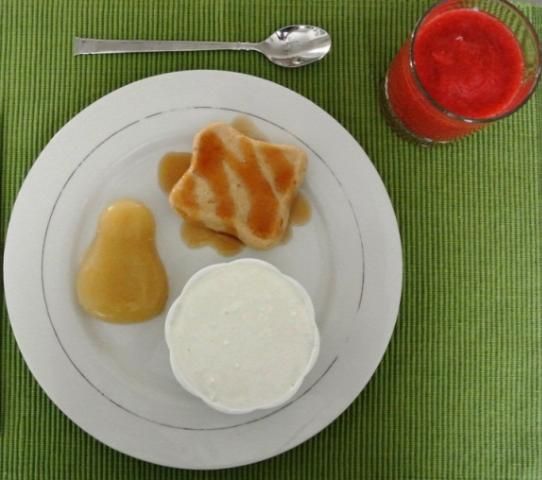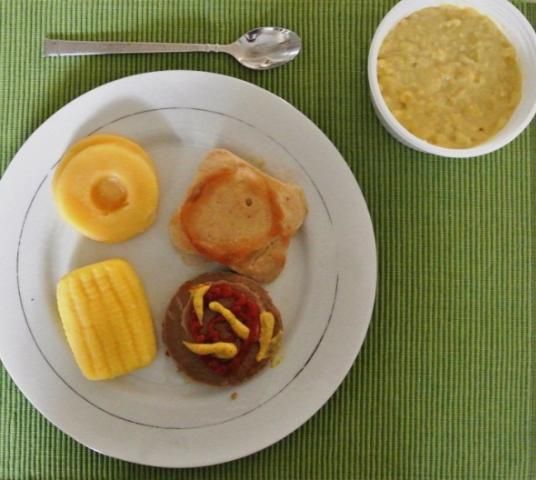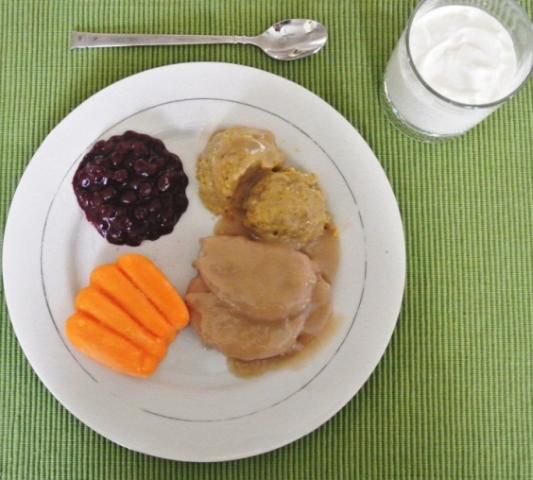What is MyPlate?
MyPlate is the dietary guidance icon from the United States Department of Agriculture based on the 2010 Dietary Guidelines for Americans. It is an easy-to-understand image that focuses on building a healthy plate. Resources and tools at ChooseMyPlate.gov can be easily adapted for people with swallowing difficulties (dysphagia) that require texture-modified foods. Although lean and low-fat foods are generally recommended, those with swallowing difficulties may need higher-fat foods to ensure acceptability and ease of swallowing and also to help them meet their energy needs.
How to Use MyPlate
The MyPlate image (Figure 1) consists of a divided plate with one-half of fruit and vegetables in addition to moderate amounts of whole grains, protein foods, and fat-free and low-fat dairy foods.

Credit: ChooseMyPlate.gov
- Make half of your plate fruits and vegetables. Choose a variety of nutrient-rich fruits and vegetables. Consider red, orange, and dark-green vegetables complemented with fruit as part of the entrée or for dessert.
- Make more than one-quarter of your plate grains. Select grains that are primarily whole grains, such as whole wheat, brown rice, whole cornmeal, oatmeal, and barley. Make less than one-quarter of your plate lean protein foods. These include animal sources such as meat, poultry, seafood, and eggs. Vegetarian alternatives would include beans, processed soy products such as tofu, tempeh, and texturized vegetable protein (TVP).
- Also, add one dairy serving to each meal.
Don't forget: Add some color to your plate! Not only does it make it more appetizing, but the nutrients from deep-colored fruit and vegetables also help support good health.
Other Factors to Consider
Choose foods that are low in sodium
- Limit commercial soups and instead prepare homemade with salt-free or low-sodium broth.
- Drain and rinse canned vegetables before puréeing or choose lower-sodium options.
Get lots of fiber
- Eat a variety of puréed vegetables and fruits daily.
- Make at least half your grains whole. Puréed whole-grain breads, crackers, and fortified cereals can be used as thickeners for many purées.
- Choose more beans, peas, and lentil purées.
- Consider adding fiber ingredients to grain and meat purées.
Stay hydrated
- Puréed foods are all high in water and thus help with hydration. If thin liquids are safe for swallowing, choose water, low-sugar fruit/vegetable juices, and low-fat and fat-free milk to increase your fluid intake.
Putting It All Together...
Sample Puréed Breakfast

Credit: UF/IFAS
Sample Puréed Lunch

Credit: UF/IFAS
Sample Puréed Dinner

Credit: UF/IFAS
MyPlate Featuring Puréed Foods
See Table 1.
Learn More
Swallowing Problems and the Older Adult—https://edis.ifas.ufl.edu/fs164
Puréed Foods for Swallowing Problems—https://edis.ifas.ufl.edu/fs168